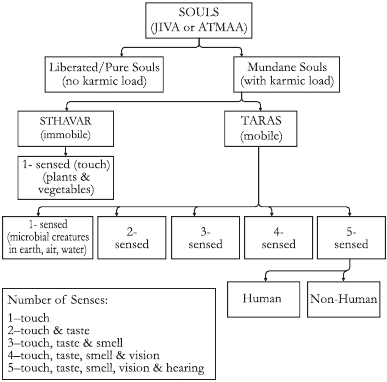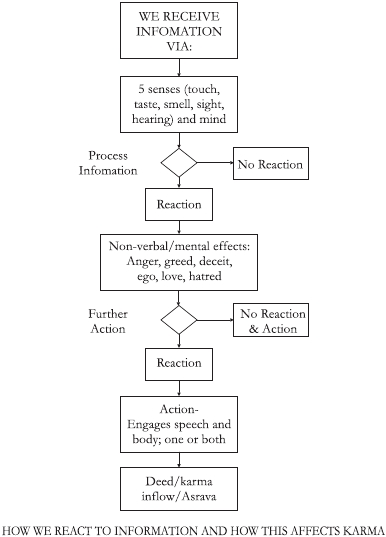The doctrine of ahimsa was founded by Eastern teachers several millennia ago. Almost all thinkers and founders of religious orders universally accept ahimsa as a core principle of human conduct. Though truth-seekers like Mahavira, Buddha, and Jesus Christ, philosophers like Lhotse and Confucius, and stalwarts like Pythagoras were separated by geographical boundaries, their work speaks to the eternality of truth. In Jainism in particular, nonviolence is considered a supreme moral virtue (ahimsa parmo dharma).
An analysis of the different religions and philosophies of India and perhaps the whole world shows that the sramana tradition - of which Jainism and Buddhism are two religious expressions emanating from almost the same place and time in India - describes ahimsa/ nonviolence as the heart of the doctrine to eliminate pain. A further analysis shows that Lord Mahavira, a few years senior to Buddha and the latest Ford- maker of Jainism, experienced and envisioned the subtlest form of nonviolence and thus made it the very heart of all his doctrines, ethics, and spiritual practices. He defined ahimsa/ nonviolence in the first limb of Jain canons, known as Acaranga, as follows:
“I so pronounce that all omniscient lords of all times state, speak, propagate, and elaborate that nothing which breathes, which exists, which lives, and which has any essence or potential of life, should be destroyed, or ruled, or subjugated, or harmed, or denied of its essence or potential.”
He further said, “That which you consider destroying or disciplining or harming or subjugating or killing is [like] yourself. The results of your actions have to be borne by you, so do not destroy anything.”
The above doctrine, preached by Mahavira, is based on the eternal truth that “the nature of all living beings is to be happy, peaceful, and enjoy bliss.” Put another way, nonviolence is our very nature.
Convergent validation for this thesis of non-killing, and its ontological nature, can be found in the first global survey of deaths by suicide, homicide, and war, conducted by the World Health Organization. The survey concludes that “violence is a preventable disease.”[6]
Later, in the tenth limb of Jain canons known as Prasna Vyakarana, Mahavira explained the practice of nonviolence in social activities by using sixty-four synonyms, such as kindness (dayā), compassion (anukampā), security (rakşā), salutariness (kallāņa), fearlessness (abhaya), non-killing (amādhā), equanimity (samatā), forgiveness (kşamā), service (sevā), friendship (maitri), pity (dayā), tolerance, and so on. This wide variety of synonyms speaks to the many possible manifestations of ahimsa in daily life.
To further explain his doctrine of nonviolence, Mahavira, in an unprecedented way, classified living beings in two primary classes: pure/liberated soul (having no karmic load) and impure/mundane soul (having karmic loads). He further sub-classified impure souls into six subtypes according to their bodies. The two primary classes are:

- Sthavara, or immobile, living beings that cannot move on their own to achieve their objectives, such as their need for air, water, or fire. This category includes one-sensed beings. All vegetation, plants, and trees belong to this category.
- Trasa, or mobile, living beings who can move on their own to achieve their objectives. The beings in this category, from ants to humans, can have two-to-five types of sense organs.

Today, contribution by the sciences to ecology and various conservancy policies and practices can be considered a direct corollary to Mahavira’s definitions of ahimsa and living beings. The self-rejuvenating nature of air and water, and their recovery from certain levels of pollution are based on the concept of these resources being living entities. Accepting this definition of our natural surroundings is of immense use in achieving ahimsa.
At the spiritual level, Jains have equated violence with sin, which is considered the greatest cause of karmic bondage and transmigration and the pains associated with it. Hence, when I commit violence against someone else, the first person to be hurt is me, as I bind bad (sinful) karmas immediately.
Further violence originates in and is committed at the mental level the moment we start scheming. Mental violence is manifested either through speech or bodily actions, or both. When we start planning violence, we experience its immediate effect in enhanced blood pressure, stress, and loss of control of our senses. It is then committed either directly, by our own activities of mind, body, and speech, or indirectly, when we condone and inspire others who are performing violent acts.
Ahimsa is the only golden thread that runs through all religions. Most religions differ from one another in all manner of doctrines and definitions, from the definition of divinity and question of who holds divine natures, to the question of whether life exists after death. Despite these disparities, all religions emphasize a strong, common thread: ahimsa, nonviolence, compassion, karuna, peace, and love. The details and degree of ahimsa may differ from one religion to another, but as a principle they all agree. Thus, ahimsa unites all religions.
 Dr. Sulekh Chand Jain
Dr. Sulekh Chand Jain
